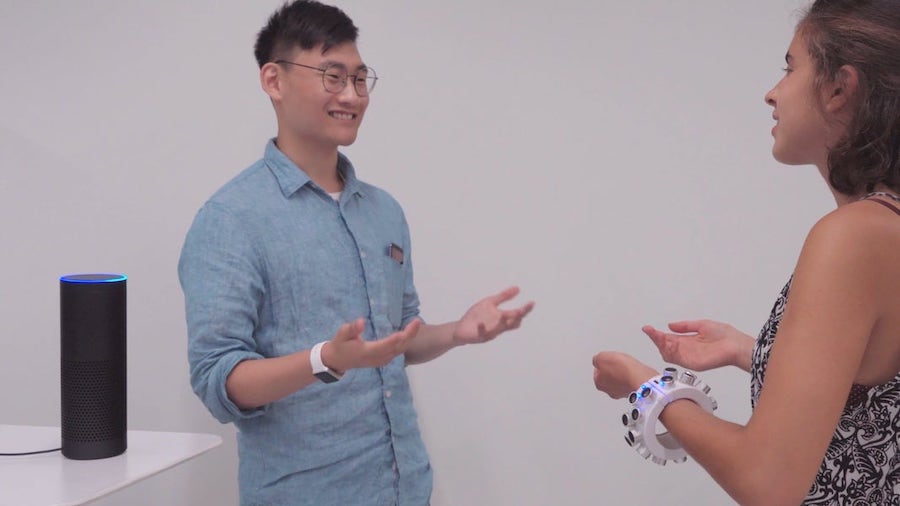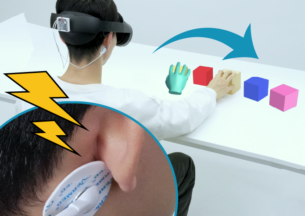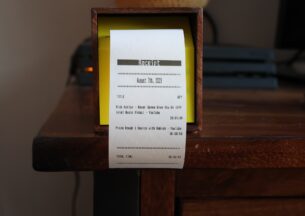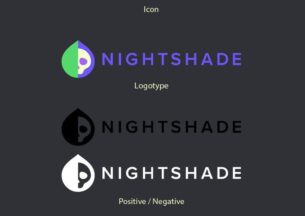New York Times Features UChicago CS Wearable Jammer Project

Increasingly popular digital assistants and home smart devices have raised privacy concerns over their “always on” microphones and the potential for unintentional recordings. To protect people from these intrusions, UChicago CS research groups SAND Lab and the Human Computer Integration Lab teamed up to develop a wearable microphone jammer, emitting ultrasonic noise to disable nearby microphones.
Calling it a “Bracelet of Silence,” New York Times technology reporter Kashmir Hill spotlighted the project, and privacy-protecting precursors such as the “jammer coat” and Reflectacles. The article discusses how an Echo speaker purchased by Neubauer Professor Ben Zhao and an objection by Neubauer Professor Heather Zheng, inspired the collaboration with Assistant Professor Pedro Lopes, PhD students Yuxin Chen, Huiying Li, Shan-Yuan Teng, and visiting students Zhijing Li and Steven Nagels.
The bracelet is like an anti-smartwatch, both in its cyberpunk aesthetic and in its purpose of defeating technology. A large, somewhat ungainly white cuff with spiky transducers, the bracelet has 24 speakers that emit ultrasonic signals when the wearer turns it on. The sound is imperceptible to most ears, with the possible exception of young people and dogs, but nearby microphones will detect the high-frequency sound instead of other noises.
“It’s so easy to record these days,” Mr. Lopes said. “This is a useful defense. When you have something private to say, you can activate it in real time. When they play back the recording, the sound is going to be gone.”
During a phone interview, Mr. Lopes turned on the bracelet, resulting in static-like white noise for the listener on the other end.
A paper on the project has been accepted for the 2020 CHI conference, and you can read more about the work at the SAND Lab website, or watch the video below.














